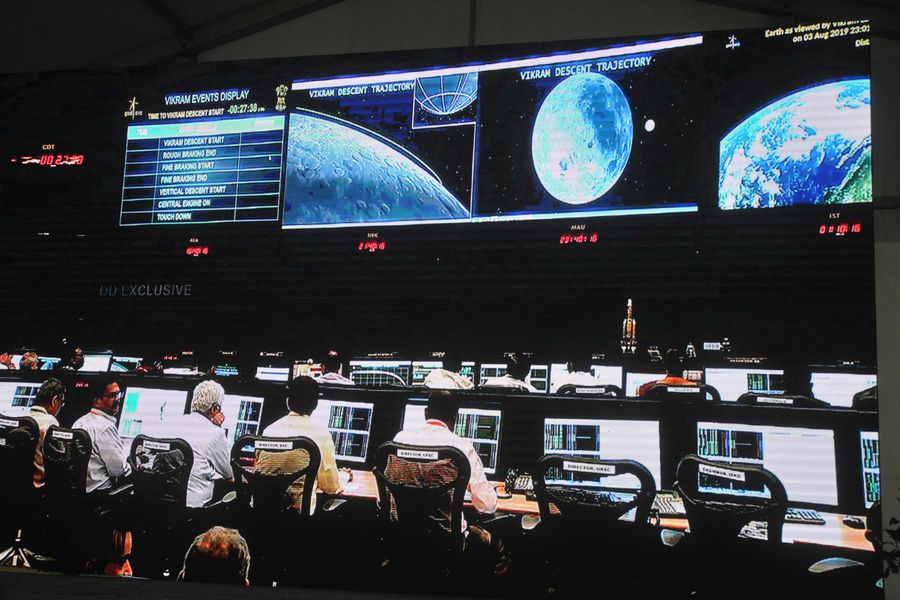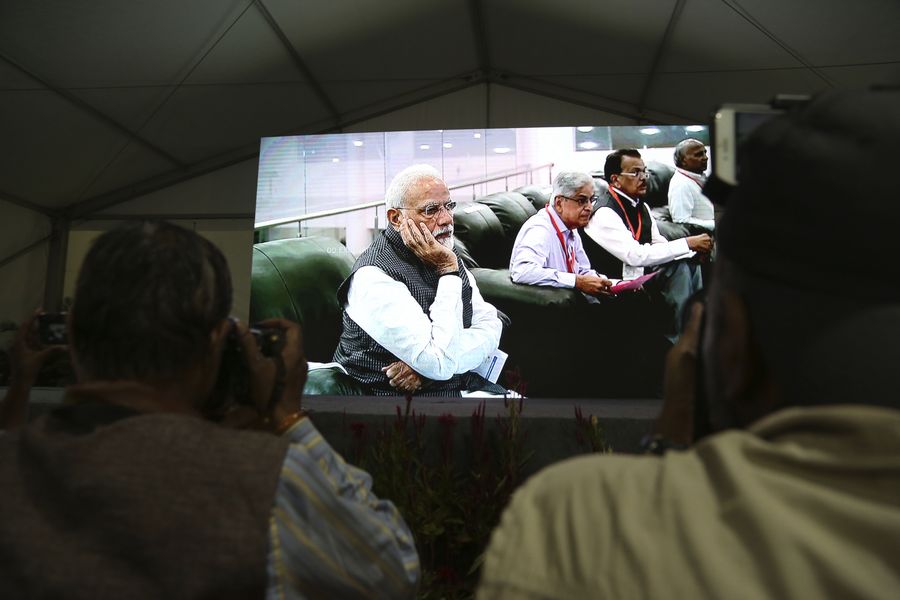
Staff work at a control room for the landing of Chandrayaan-2's Lander Vikram on the moon surface in Bangalore, India, Sept. 7, 2019. (Str/Xinhua)
ISRO says "90 to 95 percent of the mission objectives have been accomplished and will continue contribute to Lunar science, notwithstanding the loss of communication with the Lander."
NEW DELHI, Sept. 7 (Xinhua) -- India's second Moon Mission "Chandrayaan-2," which had lost communication with the ground stations in the wee hours of Saturday at an altitude of 2.1 km from the Lunar surface, had accomplished 90-95 percent of its objectives, said the Indian Space Research Organization (ISRO).
Minutes after the mission lost communication at around 0155 (Indian Standard Time), ISRO said "Vikram Lander descent was as planned and normal performance was observed up to an altitude of 2.1 km. Subsequently communication from the lander to the ground stations was lost. Data is being analyzed."
In a statement, the ISRO said that the mission would continue to contribute to Lunar science as the Orbiter had already been placed in its intended orbit around the Moon, and the Orbiter camera was the highest resolution camera (0.3m) in any Lunar mission so far.

Indian PM Narendra Modi watches the live broadcast of the landing process of Chandrayaan-2's Lander Vikram on the moon surface in Bangalore, India, Sept. 7, 2019. (Str/Xinhua)
"The success criteria was defined for each and every phase of the mission and till date 90 to 95 percent of the mission objectives have been accomplished and will continue contribute to Lunar science, notwithstanding the loss of communication with the Lander," said ISRO in its first statement after the mission suffered a huge setback.
It further said "the Orbiter has already been placed in its intended orbit around the Moon and shall enrich our understanding of the Moon's evolution and mapping of the minerals and water molecules in the Polar Regions, using its eight state-of-the-art scientific instruments."
"The Orbiter camera is the highest resolution camera (0.3m) in any Lunar mission so far and shall provide high resolution images which will be immensely useful to the global scientific community."
This was a unique mission which aimed at studying not just one area of the Moon but all the areas combining the exosphere, the surface as well as the sub-surface of the moon in a single mission, the statement added.



